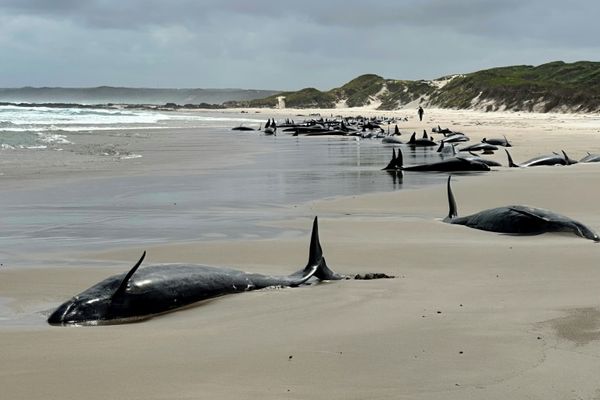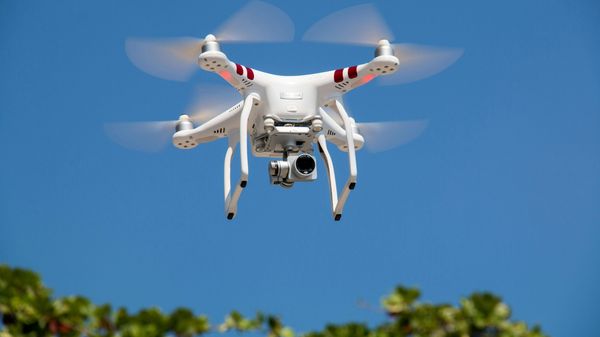Spring blossoms have started in most parts of the country, but in Alaska the ice is still melting.
I’m a climate change scientist and a mother, and the best way I’ve found to talk with my kids about a warming world is to do my science with them. And so, one spring day, the three of us go hunting for gas bubbles trapped in the winter lake ice.
I spent much of this winter shoveling snow off frozen lakes in Alaska. In fact, I’ve spent the last 22 years on hundreds of lakes across the Arctic — shoveling, and then looking. This year, I’m glad I’m not alone.
“Can I pull the sled?” asks my 7-year-old, Anders. He’s eager to show that he’s as strong and capable as his 10-year-old brother, Jorgen. He jumps down onto the lake’s four feet of fluffy snow from a “drunken” spruce tree leaning sideways over the lake’s surface. Summertime warming of recent years had thawed soil that used to remain frozen year-round, weakening support for the tree’s roots. Jorgen is holding the sled, containing a methane gas analyzer and other heavy scientific equipment. He’s not quite ready to relinquish the reins.
“Mommy,” Anders shouts. “Just on the other side of those trees, I found another lake with a big hole in it. It must be bubbling!”
My sons know these bubbles contain methane, a strong greenhouse gas. Sometimes in winter and especially in spring, the ice-trapped bubbles are released to the atmosphere, where they trap incoming solar radiation and contribute to additional heating of the planet.
My family and I have observed that methane bubbles are most abundant in places where permafrost is thawing beneath lakes. Temperature sensors inserted in frozen ground at various points around the Arctic for decades — and in Yakutsk, Siberia, for more than 100 years now — show that as long as people have been making the measurements, permafrost has been steadily warming. Where water collects at the surface in ponds, permafrost thaw accelerates and methane-spewing thermokarst (thaw) lakes form.
These lakes are emitting carbon that has been frozen and locked away from the atmosphere for thousands of years. Warming causes the freezer door to open, allowing microbes to eat carbon from formerly frozen soil in lake bottoms. Some of the microbes produce methane, which bubbles out of lakes, contributing to atmospheric warming, as does the fossil carbon emitted by human activity. This in turn causes more ground to thaw and more methane release in a vicious feedback cycle.
When we talk about climate change, my sons ask: “Are you worried, Mom?” They’ve heard countless media interviewers ask me this over the years. It’s a very good question.
Today, permafrost soils contain twice as much carbon as the atmosphere, and while the release of permafrost carbon has been going on since the last Ice Age, any accelerated release has scientists and policymakers concerned. It means humans will have to cut back even further on their own carbon emissions if society wants to limit global warming to certain thresholds, such as 2 degrees Celsius above preindustrial levels.
“No,” I respond, smiling at them. “I am interested in understanding the problem so that we are better prepared to make wise decisions, but I’m not worried.”
Because of where we live and what I do, the boys are aware of the changes taking place in the Arctic: the rapidly thawing permafrost; intensification of wildfires; losses of glaciers, ice sheets and sea ice; the threat of polar bear and walrus habitat loss; expansion of shrubs in the tundra; and spread of disease in plants. The list could go on. For many it’s leading to crippling anxiety. I understand this.
We can hope and strive to prevent further warming, and we should, but some change here and elsewhere is already unpreventable. Change has always happened.
Rather than getting scared, my husband and I have decided a constructive thing we can do is show our kids what they can do right now to be close to the Earth in all its splendor. As part of their home-school science lessons, we teach them how to monitor lake temperatures and make homemade barometers, which are useful tools to predict how much bubbling will happen in lakes. We involve them in our family farm, so they can learn firsthand how to cultivate soil, care for animals and grow food sustainably for others. They’ve taken ownership of their own learning and along the way have developed a strong ethical sense of responsibility for people and the Earth.
Much of the environmental change on Earth is undesirable, but we have a choice about how we will think about and respond to these changes. We can let the idea of change become a festering wound inside us, or we can adapt to the already inevitable changes happening around us. We can seek opportunities for improvement. All of us should avoid wasting energy so that we can slow the rates of climate change. I believe the behavior change that would have a great impact on the environment could be brought about if more people stepped outside and rekindled a love of the natural world.
The evening sun slips beyond the spruce forest horizon, allowing deep hues of blue to bleed across the sky and frost to form on our eyelashes. Jorgen’s shovel scratches away some snow on the ice, revealing a large pocket of white gas visible just below the surface. His eyes grow big and he turns to ask, “Do you have the matches, Mommy?”
“Sure I do,” I answer. “Do you want to test to see if this is methane?”
“Yes!” both boys shout at once. Jorgen grabs the long ice spear from the sled and plunges it into the ice-sealed gas pocket. I light a match, and instantly a bright orange ball of fire soars above our heads. Our faces and hands are warmed by the lingering flame leaping from the lake ice as methane burns into less potent gases, carbon dioxide and water vapor.
“Now what you boys need to do,” I say, “is figure out a way for people to put this gas to good use.” We pack up to pull our sled across the lake, through the forest and home.
____
ABOUT THE WRITER
Katey Walter Anthony, a professor of aquatic ecology, biogeochemistry and permafrost at the University of Alaska Fairbanks, is the author of “Chasing Lakes: Love, Science, and the Secrets of the Arctic.”







